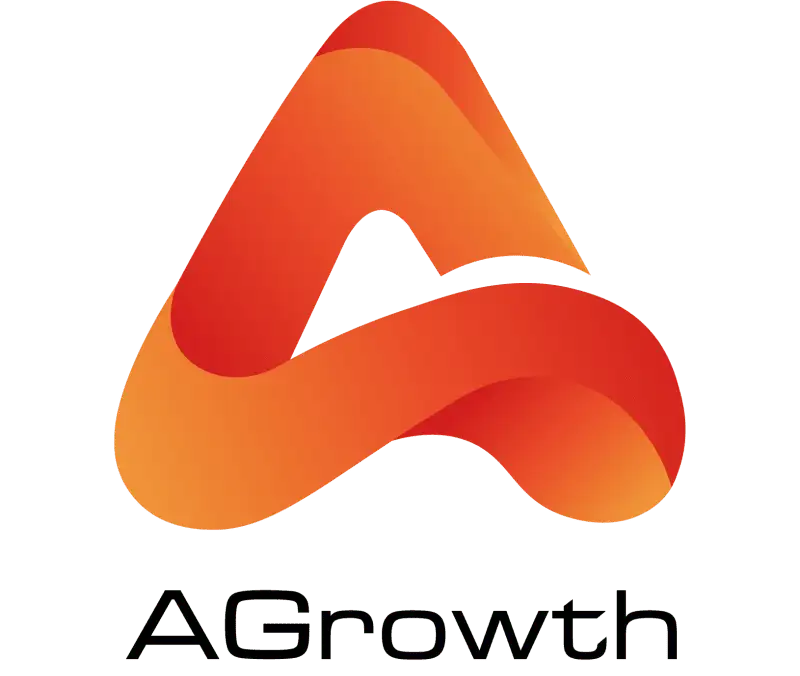
Table of Contents
Facebook Ad Library: How to Use and Maximize Your Campaigns
Understanding what your competitors are doing is no longer a guessing game. The Facebook Ad Library offers marketers and businesses a transparent window into every active ad running across Meta platforms, including Facebook and Instagram. Originally launched to address political ad transparency, it has since evolved into a critical tool for advertisers looking to refine their own strategies and spot emerging trends.
But with millions of ads live at any moment and limited access to in-depth performance metrics, making the most of this platform can be challenging. That’s why this guide walks you through exactly how to use the Facebook Ad Library to analyze competitor campaigns, extract valuable insights, and apply those findings to improve your own ad performance, without needing a large budget or advanced tools.
What is the Facebook Ad Library?
The Facebook Ad Library (also known as Meta Ad Library) is a public tool that provides transparency into all active ads running across Meta platforms, including Facebook and Instagram. Launched in 2019 to address concerns over political advertising, it allows anyone to search for and view ads, offering details about advertisers and their campaigns. Initially focused on political content, it now covers a wide range of industries and ad types, including branded content labeled as paid partnerships.
Today, the Ad Library is widely used by marketers, businesses, and researchers to analyze competitor strategies and track advertising trends. With advanced search and filtering features, it helps users explore ad creatives, messaging, and targeting approaches. The tool also enforces age restrictions for sensitive content, ensuring responsible access while maintaining its role as a vital resource for ad transparency and competitive insight.
How to access Facebook Ad Library?
The Facebook Ad Library is accessible through a direct web address without requiring any special permissions. Visit facebook.com/ads/library to begin exploring the vast collection of advertisements.
Select your country from the dropdown menu in the top-right corner of the Ad Library page to personalize your search results. This filtering option ensures you see advertisements relevant to your geographic market.
After selecting your location, choose "All ads" from the category options unless you're specifically researching issue, election, or political advertisements, which have separate categorization.
Use the search bar to enter specific brands, keywords, or industry terms related to your research goals. The search functionality allows for targeted exploration of competitor campaigns or industry trends.

How to use Facebook Ad Library to see Competitor Ads
The Meta Ad Library offers a transparent window into your competitors' advertising strategies across Facebook and Instagram platforms, also gives insights into how they structure their facebook ads accounts, such as ad formats, budget distribution, and campaign lifecycles. This free resource reveals crucial competitive intelligence that improves your campaign performance.
1. Choose Country and Ad Category
Upon entering the Ad Library, you'll need to specify the country and ad category:
-
Country: Choose the country whose ads you wish to view. This is particularly useful for businesses operating in multiple regions.
-
Ad Category: Select 'All Ads' to view all types of advertisements. If you're interested in specific categories like 'Issues, Elections or Politics,' choose accordingly.
3. Search by Keyword, Advertiser, or Industry
Once inside the Ad Library, select the country where you want to analyze ads. This step ensures you're viewing content that is geographically relevant. You can then choose between 'All Ads' or specific categories like 'Issues, Elections or Politics,' which cover fields such as Housing, Employment, and Credit in some regions.
4. Apply Filters to Refine Results
Use the filter options to narrow your results effectively:
-
Languages: Select ads in English or other supported languages.
-
Advertiser: Focus on specific competitors for deeper analysis.
-
Platform: Filter by where the ads appear, Facebook, Instagram, Messenger, or Meta Audience Network.
-
Active Status: Choose between viewing only active ads or a full history.
-
Impressions by Date: Track when ads were displayed to analyze seasonal trends.
5. Analyze Ad Creatives and Copy
The Meta Ad Library reveals ad creative elements and messaging strategies used by your competition. Examine the visuals, headlines, and copy to understand how competitors position their products and communicate value propositions to similar target audiences.
-
Media Type: Identify whether the ad uses images, videos, or carousels.
-
Ad Copy: Analyze the language, tone, and messaging used.
6. Determine Ad Longevity and Performance
The platform displays when ads were first launched, allowing you to identify which messages have sustained performance over time.
-
Long-Running Ads: Ads that have been active for extended periods may indicate successful performance.
-
Recent Ads: Newly launched ads can provide insights into current marketing strategies.
To verify whether these long-running ads are truly effective, you’ll need to check performance metrics like CTR or ROAS inside Facebook Ads Manager.
7. Find out ad spending ranges
On the advertiser’s “Summary data” page, you’ll find details such as the total ad spend, audience targeting parameters, and the number of impressions the ad received. This information offers valuable insights for refining your own targeting and budgeting plans.
For broader metrics, you can explore Meta’s Ad Library Report, which provides cumulative data, popular search trends, and a tracker that monitors overall ad spending.

Tips on maximizing Your Facebook ad Strategy with Competitor Ad Analysis
Conduct Regular Competitor Analysis
Regular competitor analysis reveals valuable insights into market positioning and messaging approaches. Analyze competitors' creative content, targeting strategies, and messaging patterns to understand their Facebook Ads Target audience. Compare multiple advertisers simultaneously to identify industry-wide trends and spot potential gaps in the market that your brand can fill. Examining how competitors adapt their messaging across seasons, holidays, or promotional periods provides tactical advantages for your campaign planning.
Study Ad Duration and Performance
Ad duration offers critical insights into campaign effectiveness. Longer-running ads typically indicate high-converting content that continues to deliver results for advertisers. Monitor which competitor ads maintain consistent presence in the library, as these often represent their most successful campaigns. The Facebook Ad Library displays engagement metrics and reaches data that help quantify ad performance beyond mere impressions. This performance data enables you to make evidence-based decisions about your own campaign durations and content strategies.
Analyze Visual and Copy Elements
Visual and copy elements form the foundation of successful advertisements. Examine competitors' visual choices including color schemes, imagery styles, and video production approaches to identify effective creative patterns. Pay close attention to ad size standards used in visuals; maintaining correct dimensions helps ensure clarity and engagement. The emotional tone and messaging approach in high-performing competitor ads reveal audience preferences you can incorporate into your own campaigns. These creative insights allow you to develop distinctive advertising while leveraging proven engagement tactics.
Leverage Seasonal and Timing Patterns
Timing patterns within competitor campaigns provide strategic planning advantages. Identify when competitors increase their advertising frequency, which often indicates peak selling periods for your industry. Note how successful brands adapt their messaging and offers during specific seasons or holidays to maximize relevance. The library's historical data allows you to track how competitor strategies have evolved over time, revealing long-term positioning shifts. These temporal insights help optimize your campaign scheduling for maximum impact during critical market periods.
Monitor Advertising Technology Adoption
Advertising technology adoption reveals competitors' strategic priorities. Observe which ad formats competitors use most frequently—whether static images, carousels, or video content—to determine optimal format selection.
The integration of shopping features, lead generation forms, and other conversion tools within competitor ads provides valuable implementation examples. These technological insights help you adopt proven innovations while avoiding formats with limited effectiveness.
Use Filtering for Targeted Insights
Filtering capabilities enhance the precision of your competitive analysis. Apply geographic filters to understand how competitors adjust messaging for different market segments including country-specific variations. Use the impression range filters to focus on high-budget campaigns that likely represent competitors' priority initiatives. Apply time range filters to isolate recent strategic shifts or compare current approaches with historical patterns. These filtering techniques transform broad competitive analysis into actionable, targeted insights relevant to your specific market position.
What are common limitations of Facebook Ad Library
The Facebook Ad Library is a valuable resource for marketers seeking transparency and insights into competitors' advertising strategies. However, it presents several challenges that can hinder its effectiveness.
Difficulty in Tracking Competitor Changes
Competitors frequently update their ad strategies, launch new campaigns, or discontinue old ones. Keeping track of these changes requires regular monitoring and can be time-consuming. The Ad Library does not offer features to alert users to these updates, making it harder to stay informed.
Challenges in Identifying Successful Strategies
Without access to detailed performance metrics, determining which ad strategies are successful is challenging. Marketers must rely on qualitative analysis and industry knowledge to infer effectiveness, which may not always provide accurate insights.
Limitations of Filter Options
While the Ad Library offers various filters, they may not be sufficient for specific research needs. Users might struggle to find the right combination of filters to narrow down results effectively, limiting the tool's utility for in-depth analysis.
Limited Access to Performance Metrics
One significant limitation is the absence of detailed performance data. The Ad Library does not provide metrics such as click-through rates, conversion rates, or return on investment. This lack of granular data makes it difficult to assess the true effectiveness of specific ad strategies.
Overwhelming Volume of Ads
With millions of ads available, navigating the Ad Library can be overwhelming. The sheer volume of content makes it challenging to sift through and identify relevant ads. Effective use of filters and a clear search strategy are essential to manage this vast amount of information.
Manual Organization of Saved Ads
The Ad Library lacks a built-in system for organizing saved ads. Users must manually categorize and tag ads, which can be tedious and time-consuming. This manual process can hinder efficiency and make it difficult to maintain a well-structured collection of ad examples.
Despite these challenges, the Facebook Ad Library remains a valuable tool for gaining insights into advertising trends and competitor strategies. By understanding its limitations and developing strategies to overcome them, marketers can still leverage the library to enhance their ad campaigns.
Frequently asked questions
How can I find ads targeting the US markets?
To view ads specific to the US or UK, use the country filter in the Ad Library. After entering your search term, select either "United States" or "United Kingdom" from the country dropdown menu to filter ads relevant to those regions.
Can I see how much an advertiser is spending on ads?
For ads related to social issues, elections, or politics, the Ad Library provides spending ranges and impression data. However, for commercial ads, detailed spending information is not disclosed.
How often is the Ad Library updated?
The Ad Library is updated daily, ensuring that users have access to the most recent active ads. This frequent updating allows for timely insights into current advertising trends and strategies.
Can I see political ad spending in the UK?
Yes, the Facebook Ad Library provides transparency for ads related to social issues, elections, or politics. You can view spending amounts, impression data, and demographic information for such ads in the UK.
How can I identify trends specific to the US?
By regularly monitoring the Ad Library and using relevant keywords or brand names, you can spot emerging trends, seasonal campaigns, and popular products unique to each market.
Are there any limitations to the Ad Library in the UK?
Yes, while the Ad Library provides valuable insights, it doesn't disclose detailed performance metrics like click-through rates or conversion data. Additionally, for commercial ads, only active ads are displayed; once an ad is inactive, it's no longer visible.
Can I download or save ads from the Ad Library?
While the Ad Library does not offer a built-in feature to download ads, users can manually save ads by taking screenshots or using browser extensions to capture the content for reference.










Your comment